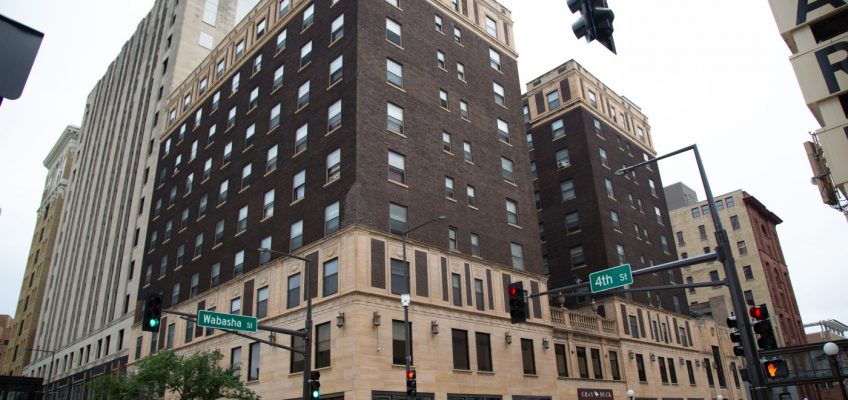By KENYA HUNTER
You may be seeing elaborate shower cleansing routines on social media: daily exfoliation, double cleansing, antibacterial soap, loads of scented body scrubs and shower oils.
Related Articles
CDC finds nearly 1 in 3 US youth have prediabetes, but experts question scant data
RFK Jr. is scaring parents into asking doctors for early shots
UN says if US funding for HIV programs is not replaced, millions more will die by 2029
Layoffs hit UMN Extension food educators as MN grapples with Trump’s budget
Men under 40 are most at risk for testicular cancer. Few know it
“I’m kind of appalled by the shower routines,” said Dr. Olga Bunimovich, who teaches dermatology at the University of Pittsburgh.
The multistep processes that have inspired people to spend endless amounts of time sudsing up can harm your skin — and the environment. Dermatologists say it’s all mostly unnecessary.
“Your skin is a barrier,” said Dr. Nicole Negbenebor, a dermatologic surgeon at University of Iowa Health Care. “It’s one of the biggest barriers you have. It’s you in your natural elements. So you want to treat it right, and then sometimes there can be too much of a good thing.”
Here’s what to know about how to take a basic shower and indicators that you’ve gone too far with your routine.
The basics of showering
A shower is a relatively simple routine that usually doesn’t require 10 steps or a plethora of products.
A daily shower with lukewarm water and a fragrance-free hypoallergenic cleanser — followed by hydrating lotion or oil afterward — will do the trick.
Don’t plan to stay in the shower too long or turn the water temperature too high — it can strip your skin of the natural oils it needs to maintain its barrier, leaving it vulnerable to dryness and irritation.
When it comes to soaps, use one meant for sensitive skin. Antibacterial soaps are popular, but experts said they dry out your skin too much for daily use. (However, they can be beneficial for people with an autoimmune skin condition called hidradenitis suppurativa, which causes painful boils and abscesses on the skin.)
Oils can be beneficial for your skin once you’re damp and out of the shower, Negbenebor said. But it’s important to remember that oil isn’t a moisturizer, but a sealant. The water hydrates your skin, but the oil will lock in that moisture.
“It’s nice to hear about skincare routines that do involve both cleansing and also providing hydration,” Dr. Lisa Akintilo, a dermatologist at NYU Langone Health, “because that’s missing in a lot of people’s skin care routine.”
“Double cleansing” is unnecessary
Some influencers suggest that a skin care routine isn’t complete without exfoliation and what’s called double cleansing.
The latter is typically reserved for facial skincare routines, especially when you’re wearing makeup, and involves using an oil-based cleanser to break down makeup and excess oil followed by a water-based cleanser to remove any remaining residue.
Experts said you don’t need to bring that practice to the full body.
“Not only do I not think that we need to double cleanse our skin … people overuse soap all the time,” Bunimovich said. “You should not be soaping up all of your skin, period.” Instead, Bunimovich added, wash your privates and your skin folds.
Another thing that can dry out your skin is antibacterial soap. There are many claims out there that say antibacterial soap is a necessity for a regular body care routine, but experts say those soaps often have the same ingredients as regular soaps and are too drying for daily use. However, they can be beneficial for people with an autoimmune skin condition called hidradenitis suppurativa, which causes painful boils and abscesses on the skin.
Exfoliate — but not too much
Exfoliation is meant to remove dead skin cells off our body, and is good for our skin, experts said. But doing it daily could cause a mound of problems, especially if you have dry skin or skin conditions like eczema or acne.
Manual exfoliation — that is when you use a body scrub or a rougher loofah — should be done sparingly to avoid irritation.
If you see rashes on your skin after exfoliation, it may be a sign you’re over doing it.
A more gentle way of exfoliating is using products that have lactic or glycolic acid, dermatologists said, but not all the time.
Save water, shorten your shower
Showers account for nearly 17% of Americans’ indoor water use, the Environmental Protection Agency says.
Multiple states in moderate to severe drought conditions have called for water conservation efforts this year — including taking shorter showers.
If you want to get clean and retain your natural oils, a lukewarm shower that gives you enough time to clean your body should do the trick in most cases.
The Associated Press Health and Science Department receives support from the Howard Hughes Medical Institute’s Department of Science Education and the Robert Wood Johnson Foundation. The AP is solely responsible for all content.




